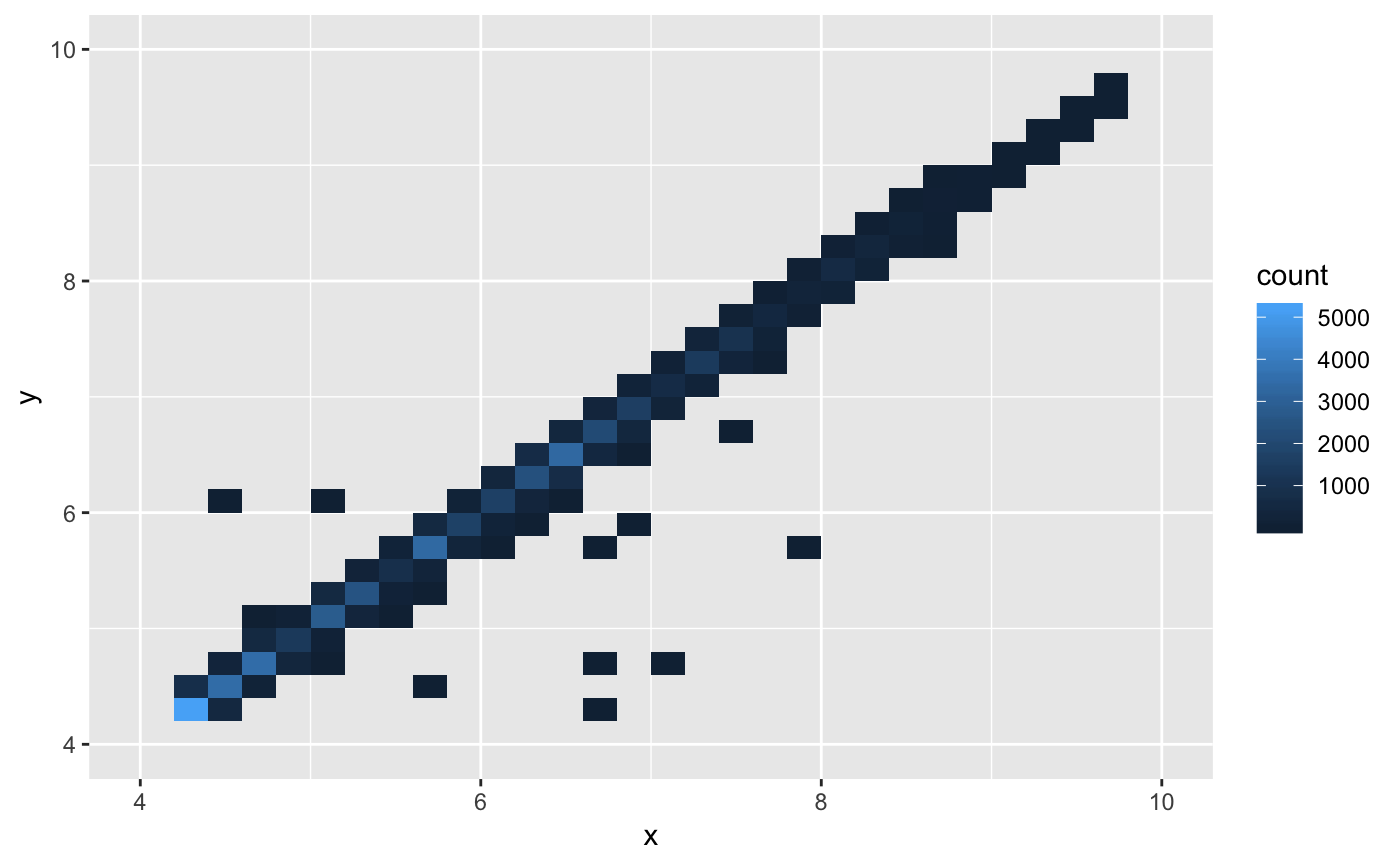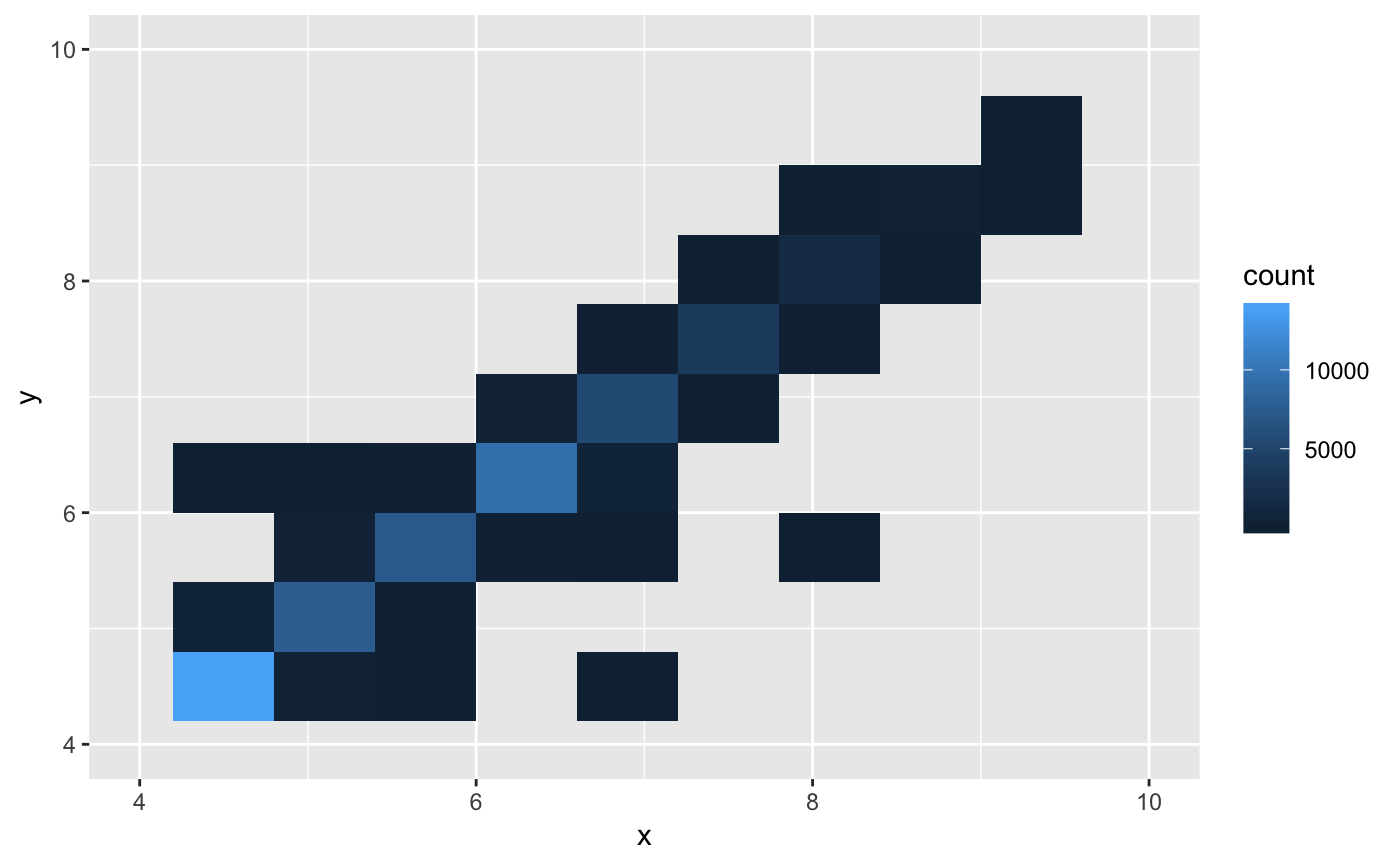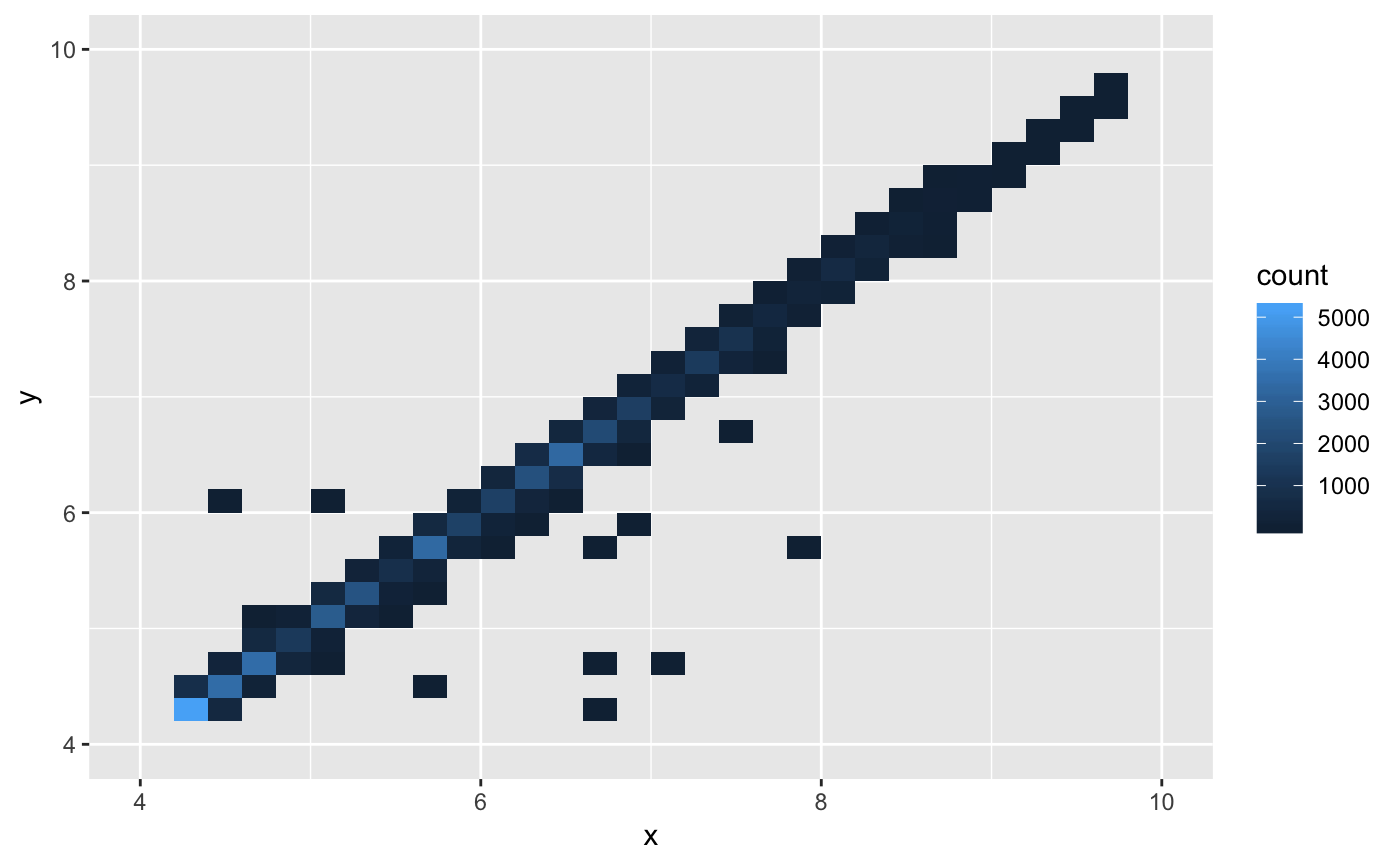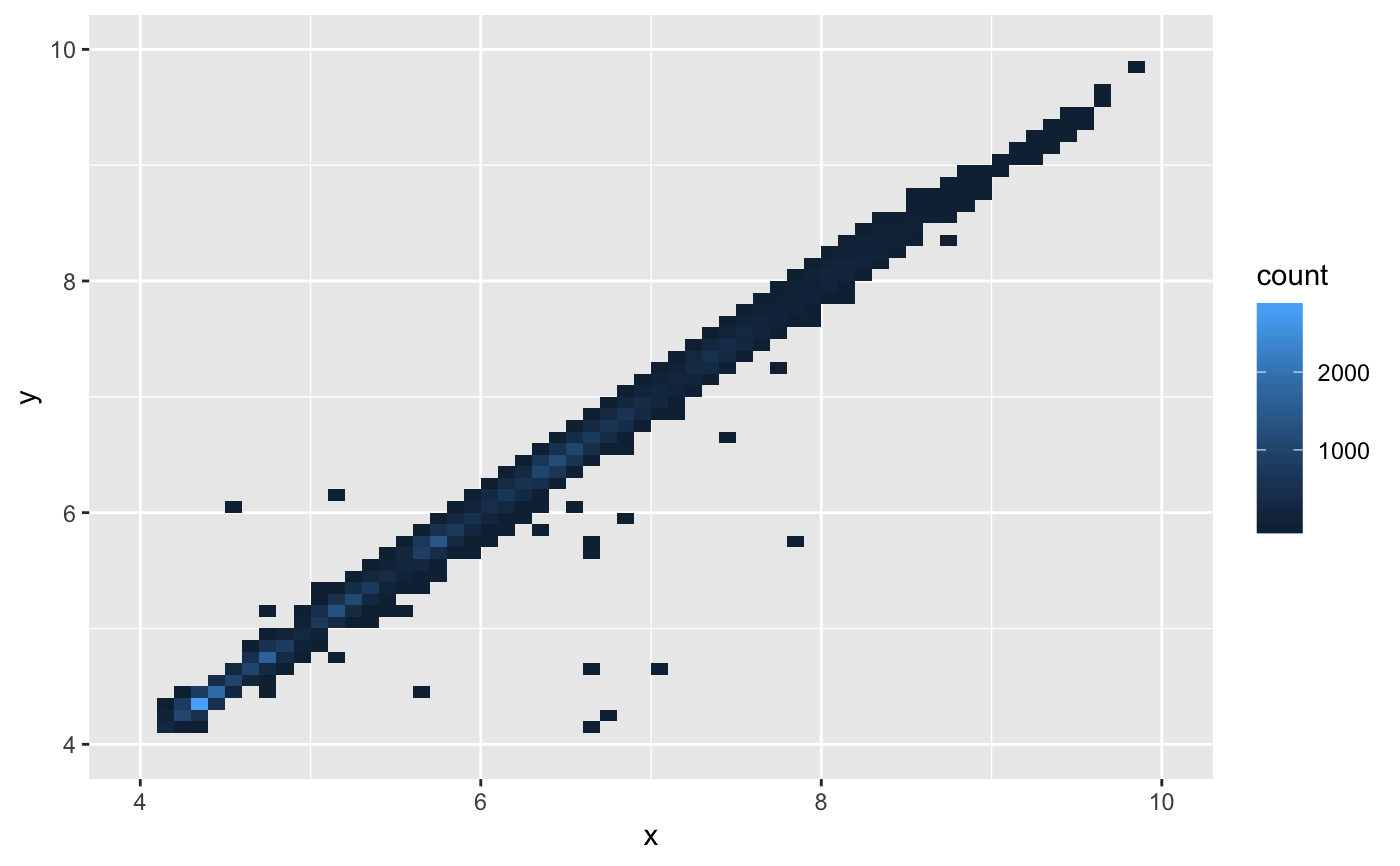Divides the plane into rectangles, counts the number of cases in
each rectangle, and then (by default) maps the number of cases to the
rectangle's fill. This is a useful alternative to geom_point()
in the presence of overplotting.
geom_bin2d(mapping = NULL, data = NULL, stat = "bin2d", position = "identity", ..., na.rm = FALSE, show.legend = NA, inherit.aes = TRUE) stat_bin_2d(mapping = NULL, data = NULL, geom = "tile", position = "identity", ..., bins = 30, binwidth = NULL, drop = TRUE, na.rm = FALSE, show.legend = NA, inherit.aes = TRUE)
Arguments
| mapping | Set of aesthetic mappings created by |
|---|---|
| data | The data to be displayed in this layer. There are three options: If A A |
| position | Position adjustment, either as a string, or the result of a call to a position adjustment function. |
| ... | Other arguments passed on to |
| na.rm | If |
| show.legend | logical. Should this layer be included in the legends?
|
| inherit.aes | If |
| geom, stat | Use to override the default connection between
|
| bins | numeric vector giving number of bins in both vertical and horizontal directions. Set to 30 by default. |
| binwidth | Numeric vector giving bin width in both vertical and
horizontal directions. Overrides |
| drop | if |
Aesthetics
stat_bin2d understands the following aesthetics (required aesthetics are in bold):
xyfillgroup
Learn more about setting these aesthetics in vignette("ggplot2-specs")
See also
stat_binhex() for hexagonal binning
Examples
#> Warning: Removed 478 rows containing non-finite values (stat_bin2d).# You can control the size of the bins by specifying the number of # bins in each direction: d + geom_bin2d(bins = 10)#> Warning: Removed 478 rows containing non-finite values (stat_bin2d).#> Warning: Removed 4 rows containing missing values (geom_tile).d + geom_bin2d(bins = 30)#> Warning: Removed 478 rows containing non-finite values (stat_bin2d).# Or by specifying the width of the bins d + geom_bin2d(binwidth = c(0.1, 0.1))#> Warning: Removed 478 rows containing non-finite values (stat_bin2d).



